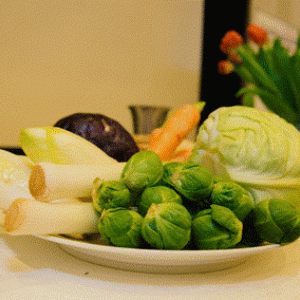
This paper by FCRN member Corné van Dooren and colleagues reports that higher greenhouse gas emissions tend to be generated in the production of energy dense foods and lower in nutrient dense foods, and that emissions show significant correlations with 15 nutrients, including saturated fat, animal protein and sodium. Using these finding, the authors propose a ‘Sustainable Nutrient Rich Foods’ (SNRF) index, which summarises both climate and nutritional impacts of individual foods.
The index includes three nutrients which, for health reasons, should be encouraged (essential fatty acids, dietary fibre and plant protein) and three which should be limited (saturated fat, salt and added sugar) combined with energy density. The SNRF index then relates these health-related nutritional characteristics with greenhouse gas emissions of foods to divide foodstuffs into three general groups shown in the figure below.
- Red indicating foods with a negative nutrient profile and high climate impact;
- Amber indicating foods with a moderate nutrient profile and medium climate impact;
- Green, indicating a positive nutrient profile and low climate impact.
The number of data is limited to specific products, but the products analysed in this study do cover 95% of the food consumed in the Netherlands (but not for other countries).

Fig: Relation between SNRF and GHGEs of 39 EPIC-soft product groups: GHGEs (log10CO2eq) = (6.246 − SNRF)/2.451 (R2 = 0.384). Animal product groups are underlined. Groups are classified in three classes: red (Y-axis ≤ − 1.0), amber (− 1.0 to 1.0), and green (≥ 1.0). The borders of the amber group are defined by the average GHGE ± 1 SD (X-axis 2.44 ± 0.49).
The authors propose that using the simple SNRF as a nutrient profiling ‘traffic light’ system should be explored. Quantifying health and environmental impacts in simple classes would then provide consumers with a simple, consistent method to make better informed food choices.
However, it is worth noting that this study and the resulting index look at individual foods rather than whole diets. As various studies have pointed out, comparisons between different food stuffs across the spectrum (e.g. a carrot with cheese) may not always yield helpful comparisons as the different foods provide very different nutritional benefits and/or disadvantages. Furthermore the scores achieved by any one food highly dependent on the design of the score (i.e. which nutrients are included/penalised, how and if they are weighted and so forth). For studies discussing these issues, see for example:
- This paper by van Kernebeek et al (2014) which emphasises that that the nutrient intake resulting from a meal (let alone an individual food type) cannot be used to assess the nutritional quality of a daily diet and, hence, the environmental impact of meals cannot be compared to that of daily diets.
- This critique by Scarborough and Rayner (2010) of a paper by Smedman et al. which relates nutrient density in beverages to GHG emissions.
- This Röös et al (2015) study (here summarised by the FCRN) which looks at the health and environmental impacts of entire diets.
- This study by Drewnowski et al (2014, available open access) comes to slightly different conclusions as to the nutritional ‘value per emissions’ of certain key foods.
Comments on the merits or otherwise of nutrient profiling are very welcome. Please log in (or sign up as a member) and write your comment below.
Abstract
The aim of this study is to explore the relations between the climate impact of food products and their nutritional characteristics, in order to propose a nutrient density index that quantifies these relations. Our study is based on the nutritional characteristics of the 403 most consumed food products in the Netherlands. Metabolic energy density, nutrient density (Nutrient Rich Foods index: NRF) and Greenhouse Gas Emissions (GHGEs) of the products were calculated. Low GHGE intensity per 100 g correlated with positive nutritional characteristics of food products. This is true for low energy density, and high nutrient density, expressed as the well-established NRF9.3 index. This index was improved to include the contribution of food products to GHGEs. GHGEs of product groups correlate more strongly with the proposed Sustainable Nutrient Rich Foods index (SNRF). This SNRF summarizes six distinctive nutrients (three which should be encouraged and three limited), as well as (metabolic) energy density. Including such an index on food product labels could assist consumers in making better informed food choices.
Reference
van Dooren, C., A. Douma, H. Aiking and P. Vellinga (2017). "Proposing a Novel Index Reflecting Both Climate Impact and Nutritional Impact of Food Products." Ecological Economics 131: 389-398.
Read the full article here (paywall).
Related work includes this article and this paper as well as the papers and critiques mentioned above.







Post a new comment »